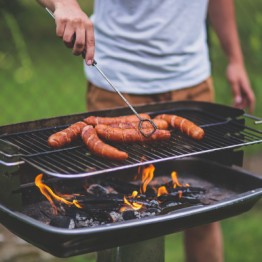All it takes is a few good snow storms to remind us winter is here to stay. As the snow flies and the wind blows, it’s important to remember to practice safe winter driving (which means more than just snow!)
There’s a reason some professionals are adamant about calling winter tires “winter tires” as opposed to “snow tires.” Most all-season tires harden starting at 45°F. This turns them into hockey pucks – not good for driving on ice. Winter tires, on the other hand, are designed to be softer in these colder temperatures.
Before you even head out, be prepared. Visit your local automotive shop to make sure your car is ready for the cold weather. You’ll want to have the experts check your tires, brakes, battery, cooling and heating, lights and oil. In addition, protect your visibility. Even the most winter-ready car is dangerous if you can’t see. Clean your windshield, get new wiper blades, refill your wiper fluid and pack your ice scraper. You’ll also want to pack an emergency kit, just in case.
Next, with unseasonably warm temperatures comes rain. Make sure to check your tire tread depth. This is how we determine when you’ll need new ones. All tires wear down with use, and as they do, the distance it takes you to stop on a wet road diminishes. The more tread you have, the sooner you’re going to stop. That can make the difference between a close call and a collision.
When you get on the road, take your time. Leave early and call your destination ahead of time to let them know you’re on the way. Reduce your speed, avoid cruise control and avoid distractions. If you lose control, remain calm. Ease off the gas and avoid sudden reactions.
Finally, we have the human factor. Most of us, regardless of where we live, know what it’s like to drive the first day of bad weather – we often say that people forget how to drive. But then we settle into our changed environment and move on. With this atypical winter weather, the concern is that people forget about things like black ice. But it’s out there. (And, yes, bridges do freeze sooner.)
Bonus, don’t forget to check your tire pressure! For every drop in temperature, your tires lose pressure. This means their contact with the road is a little less each time. It doesn’t matter what season it is. We should all be checking our tire pressure monthly.
With these safety tips, you’ll be able to show winter who’s boss this year. Stay calm, be smart and enjoy the winter driving.


